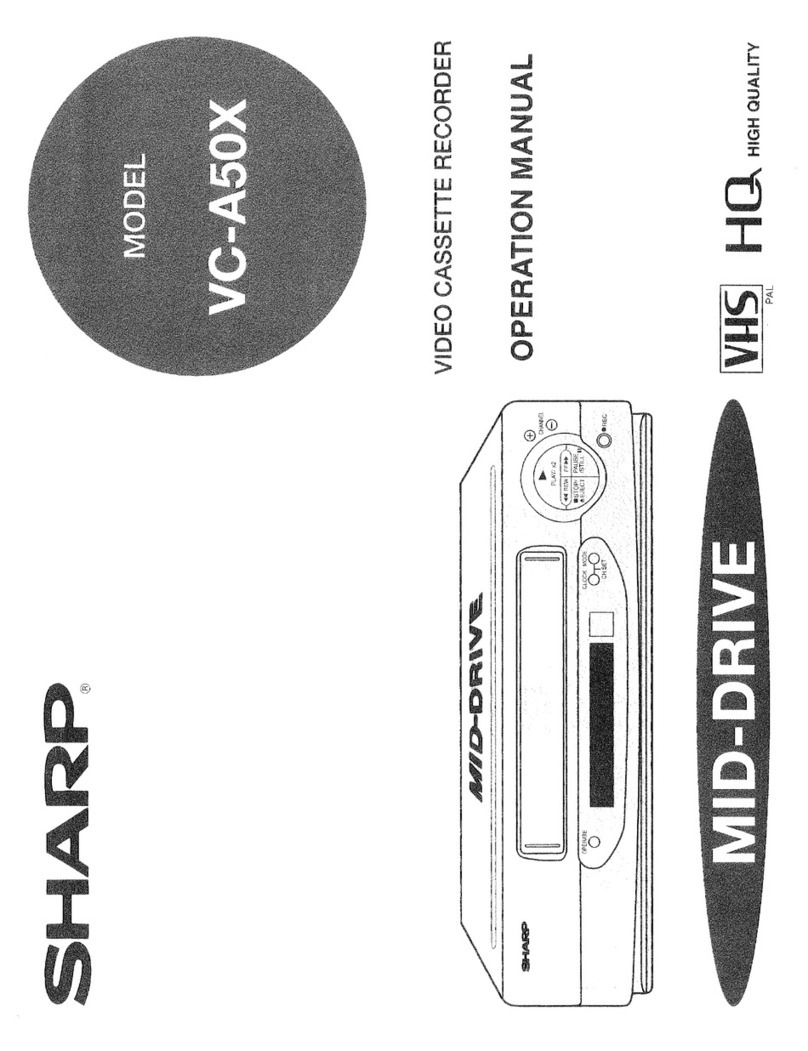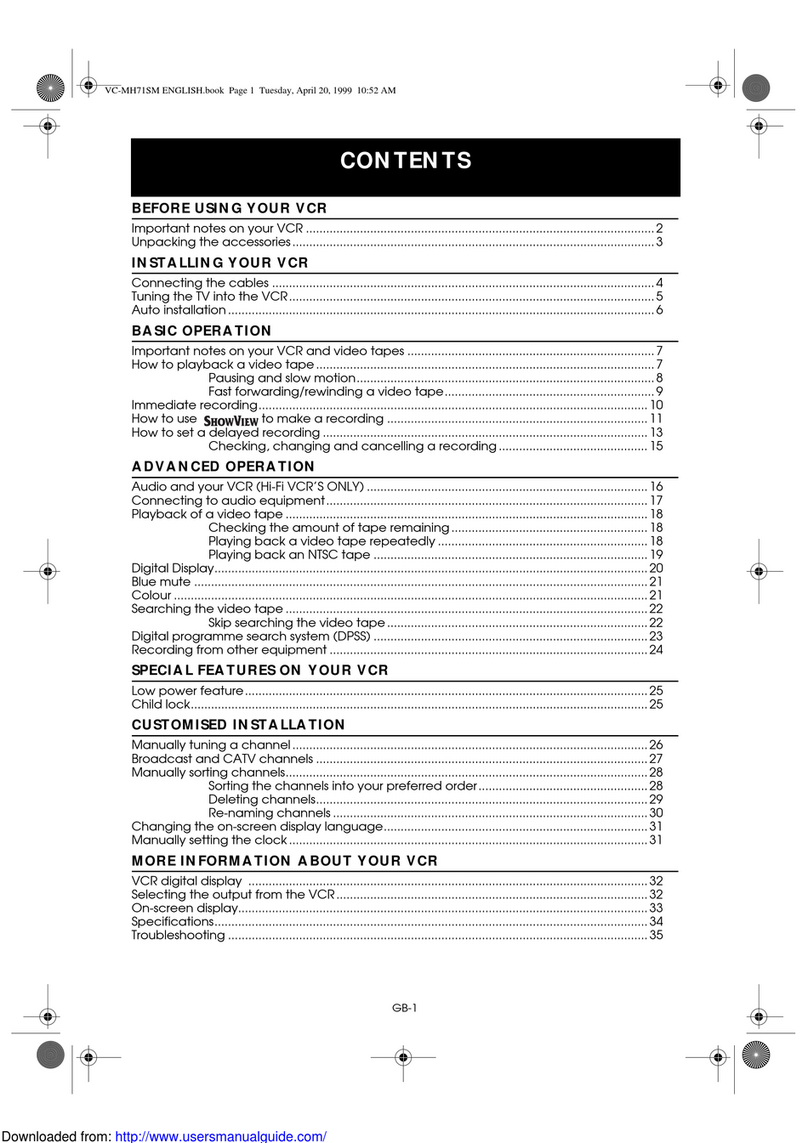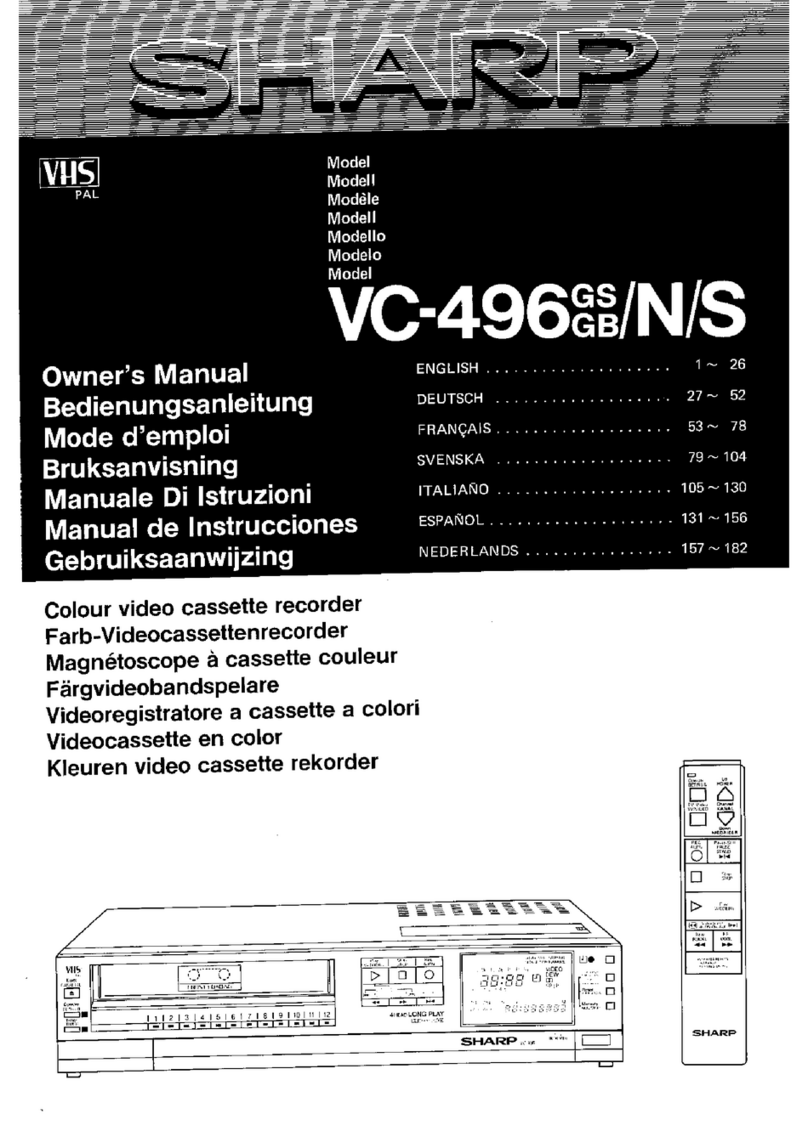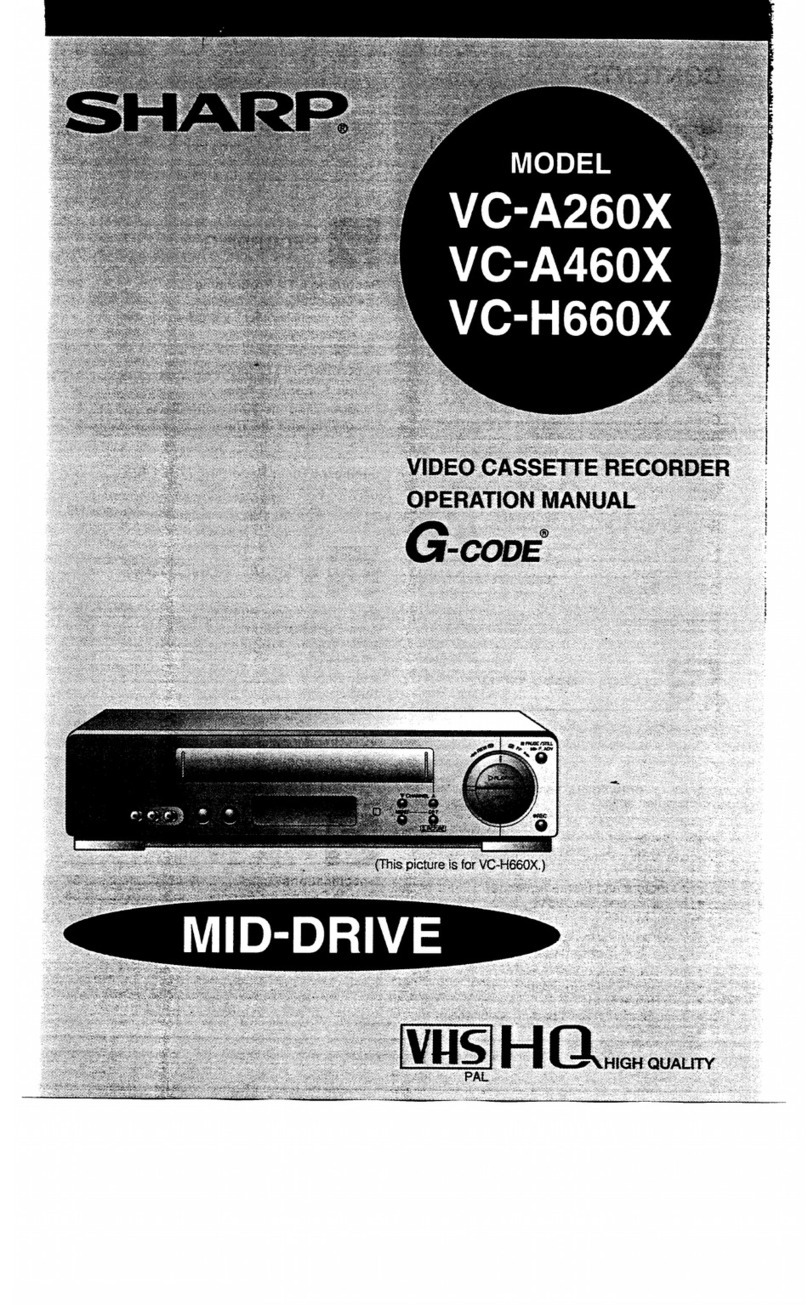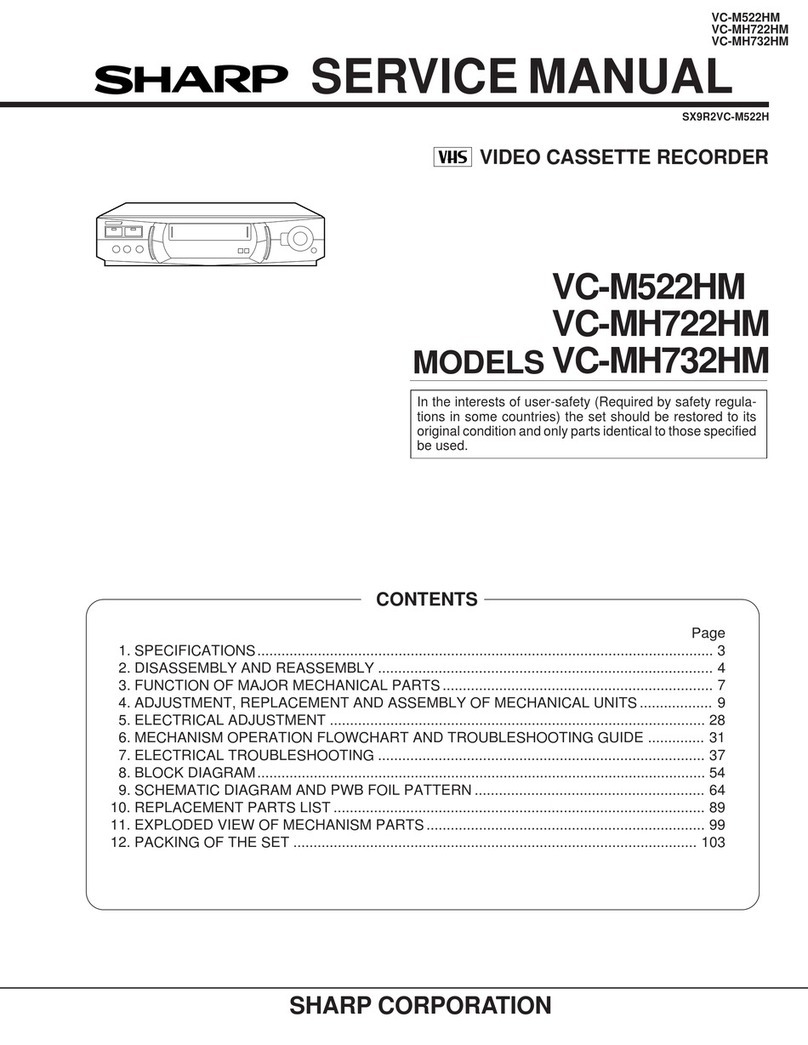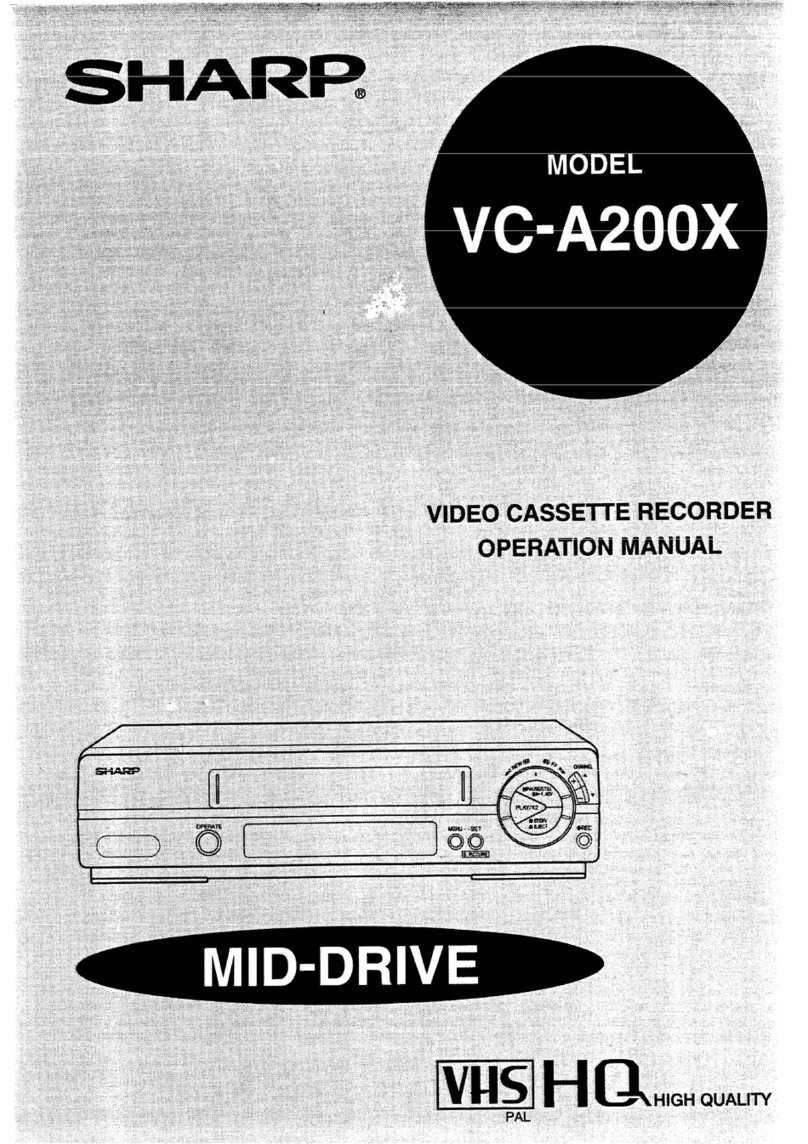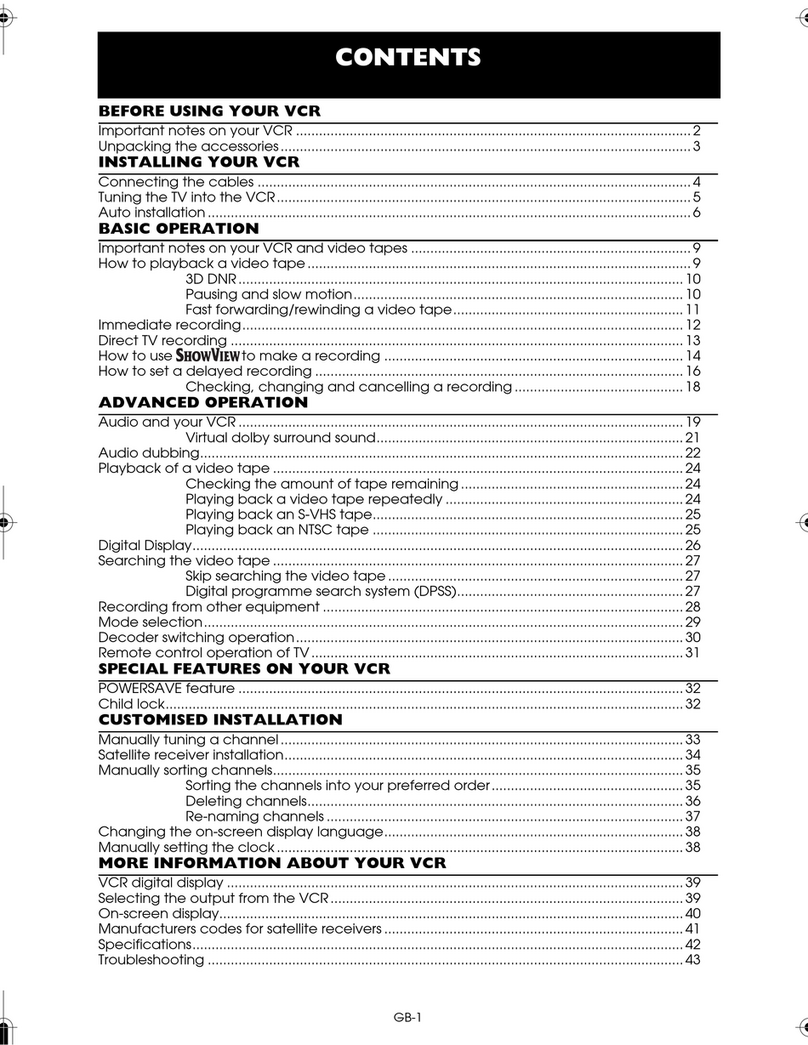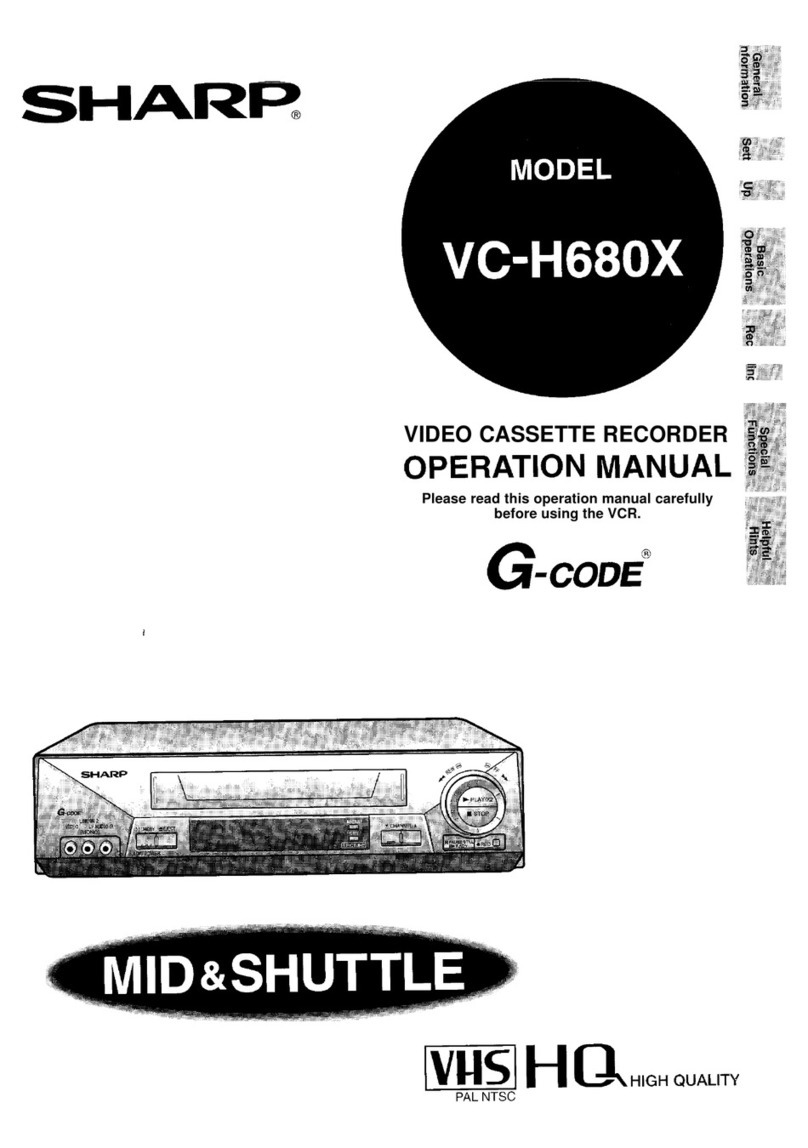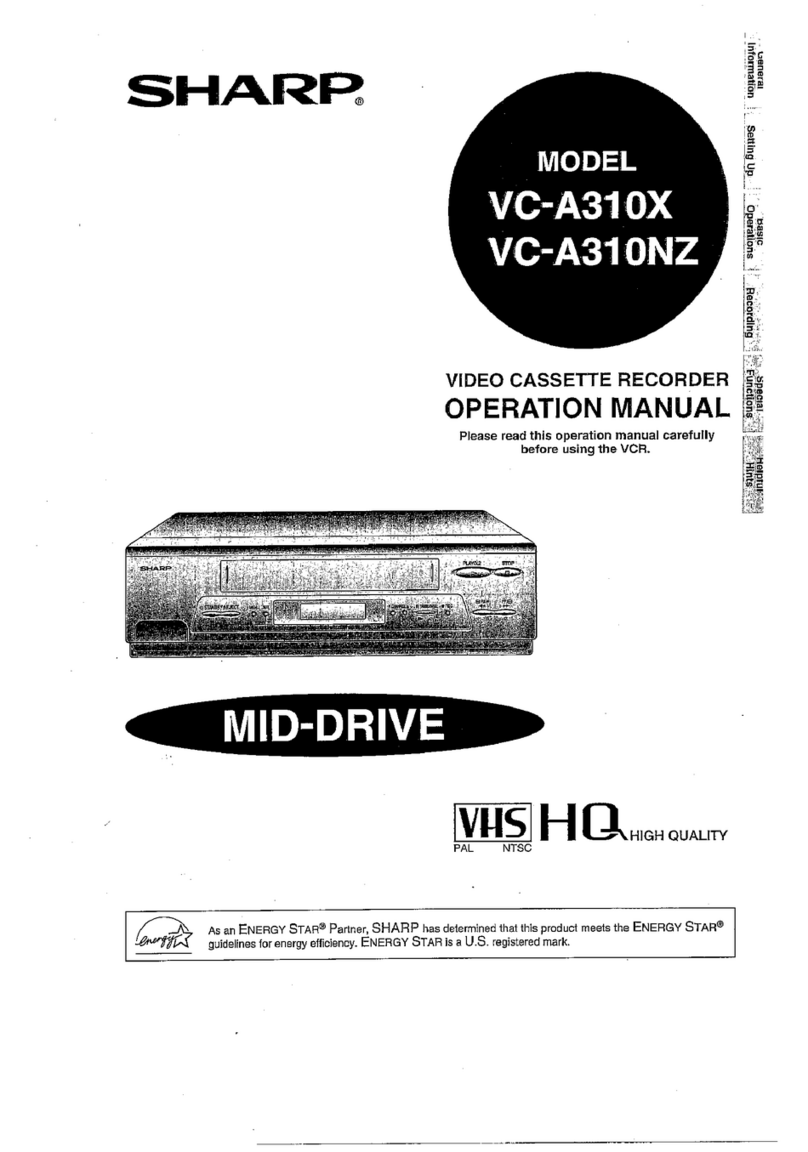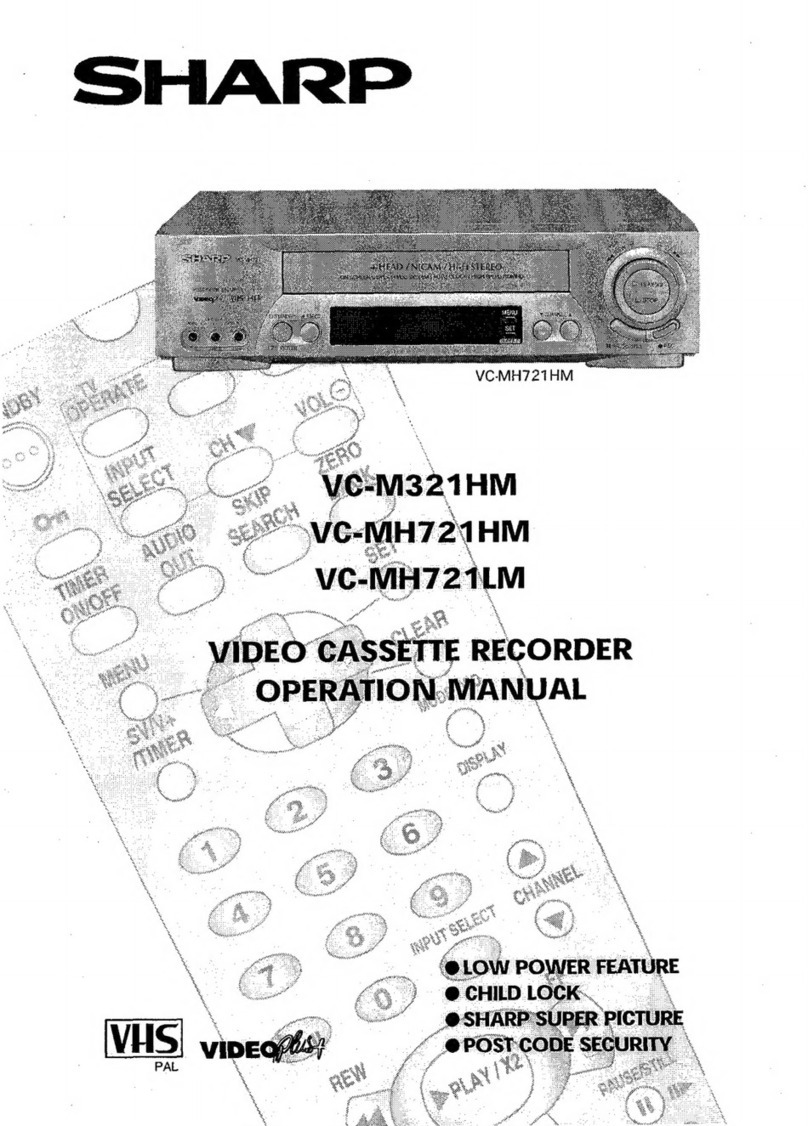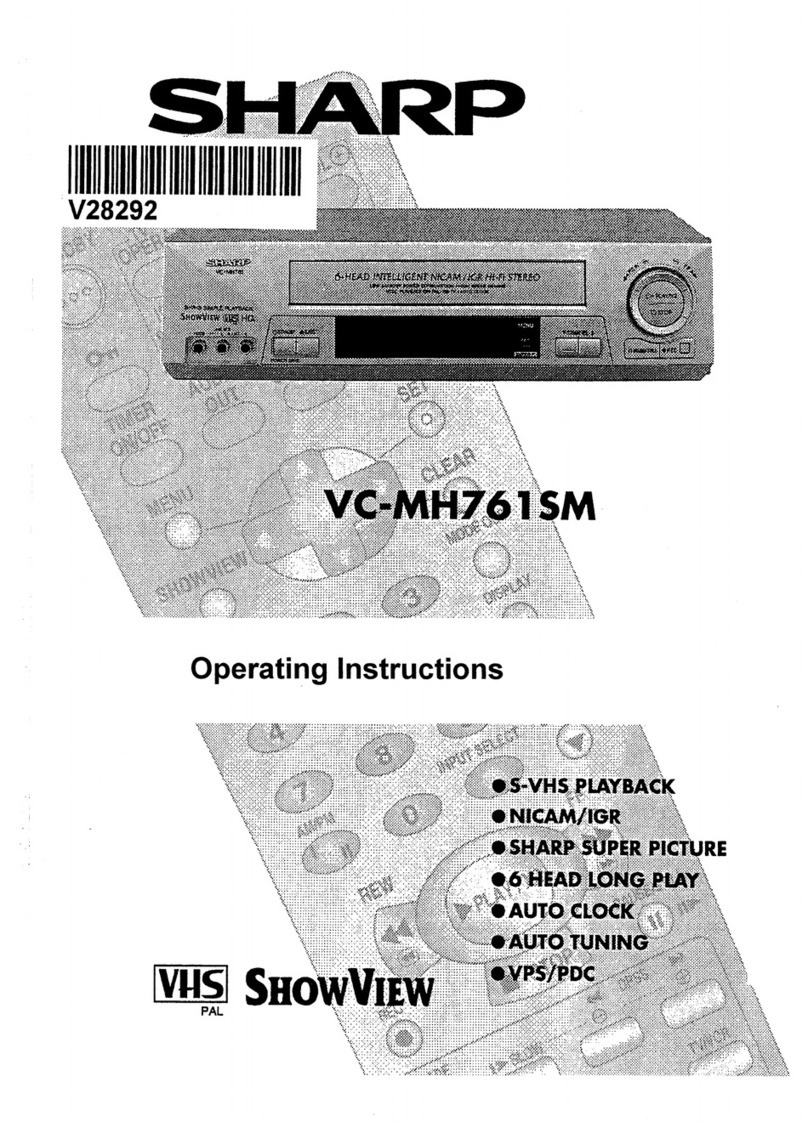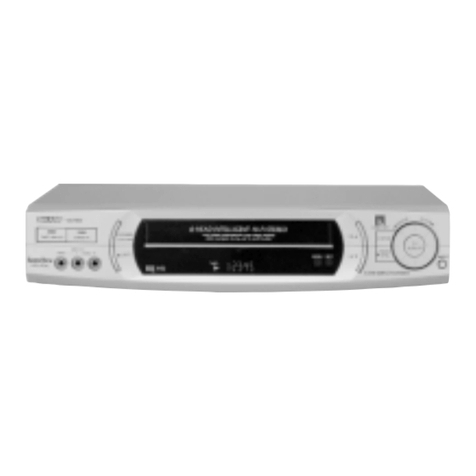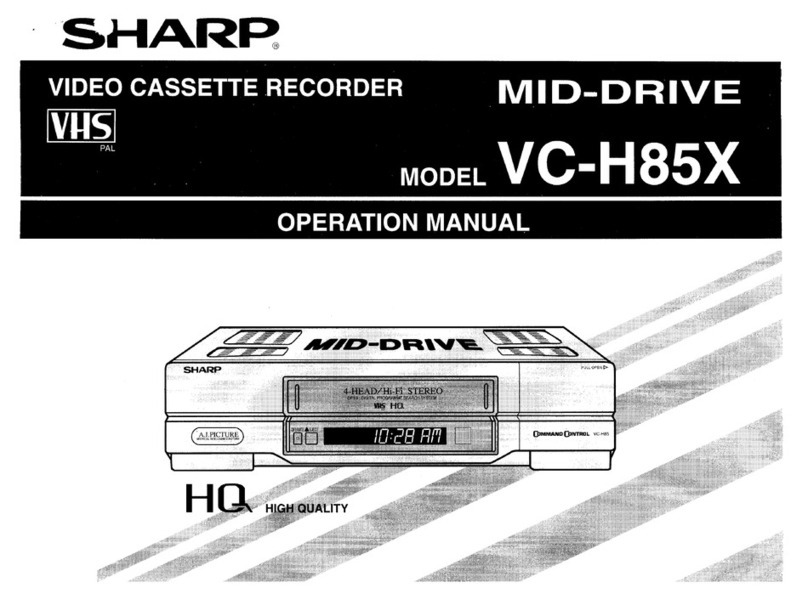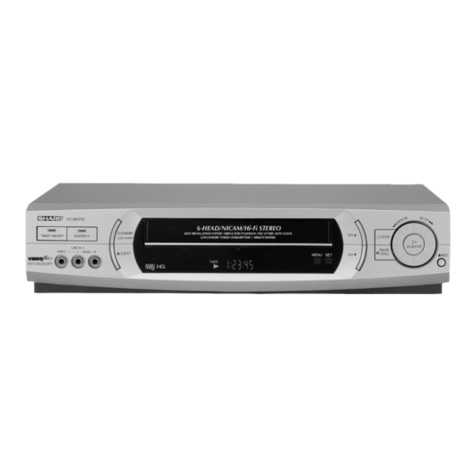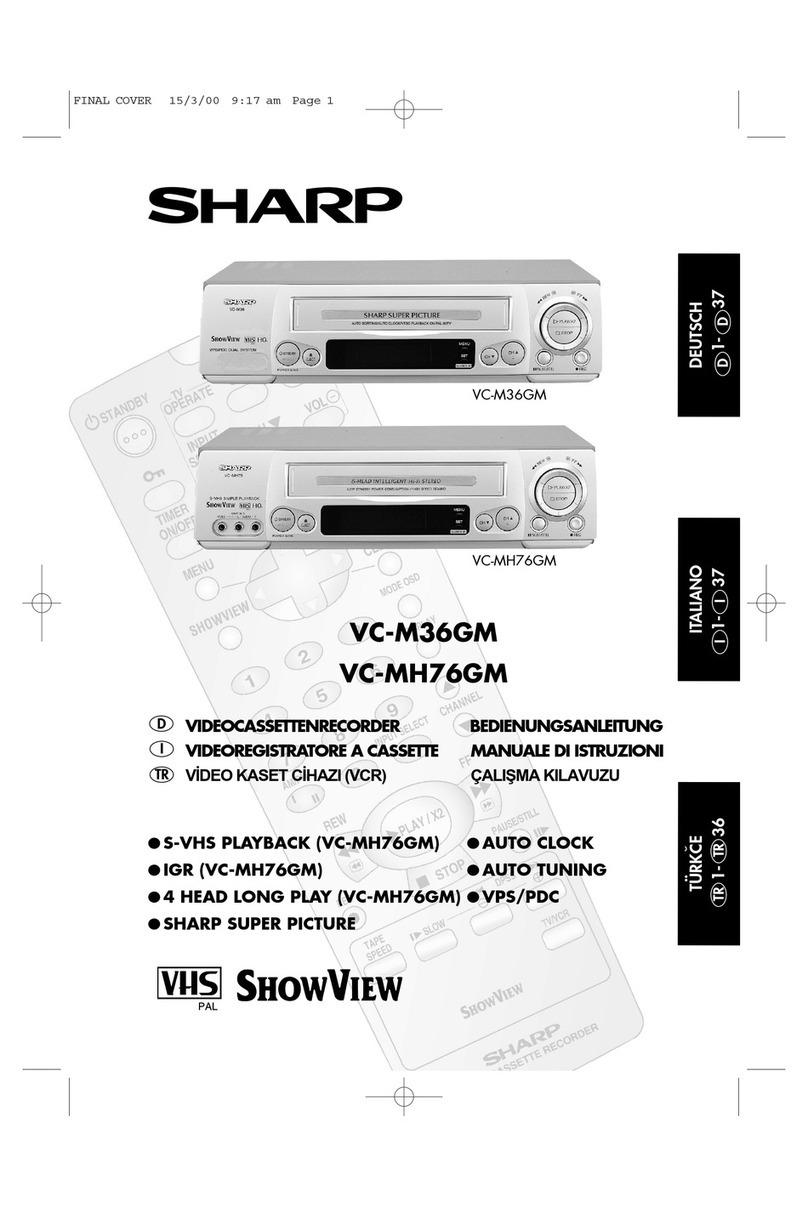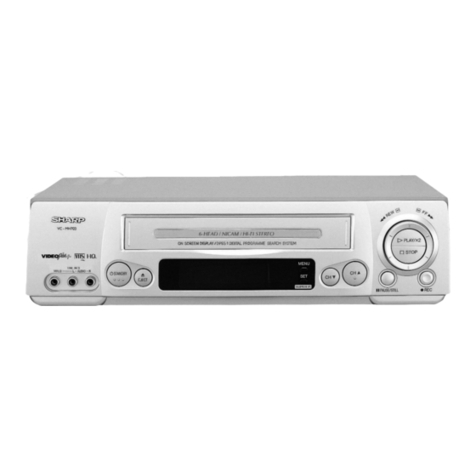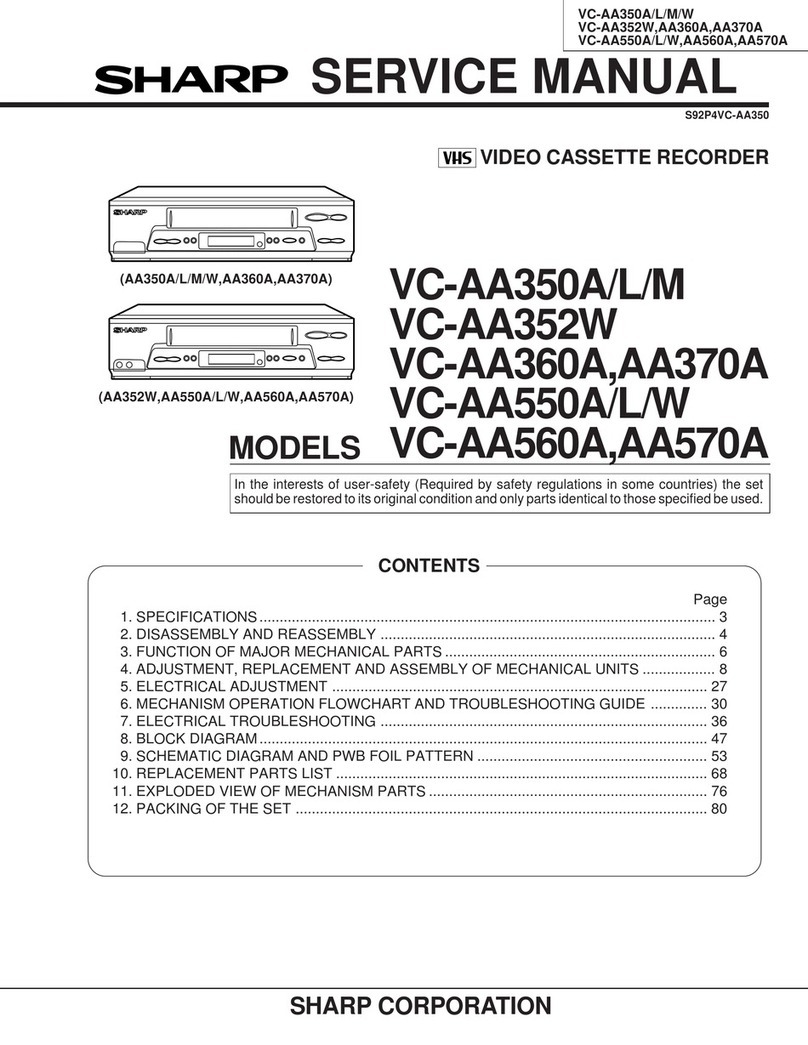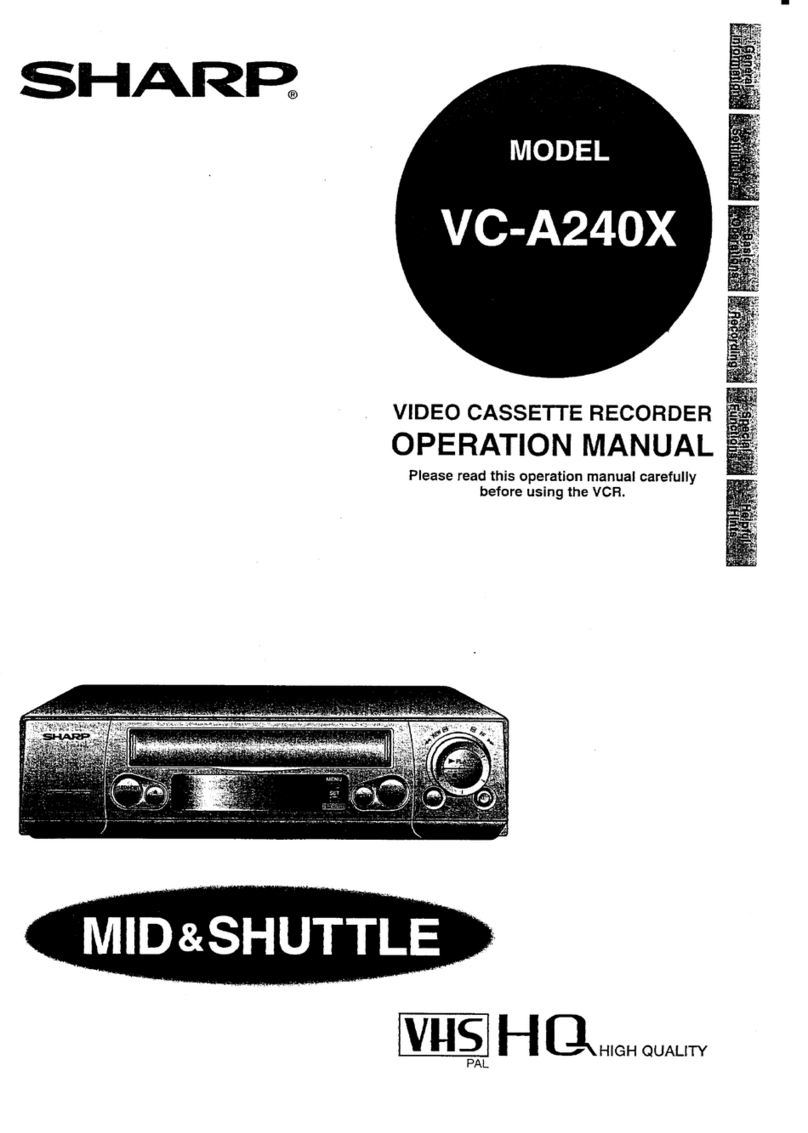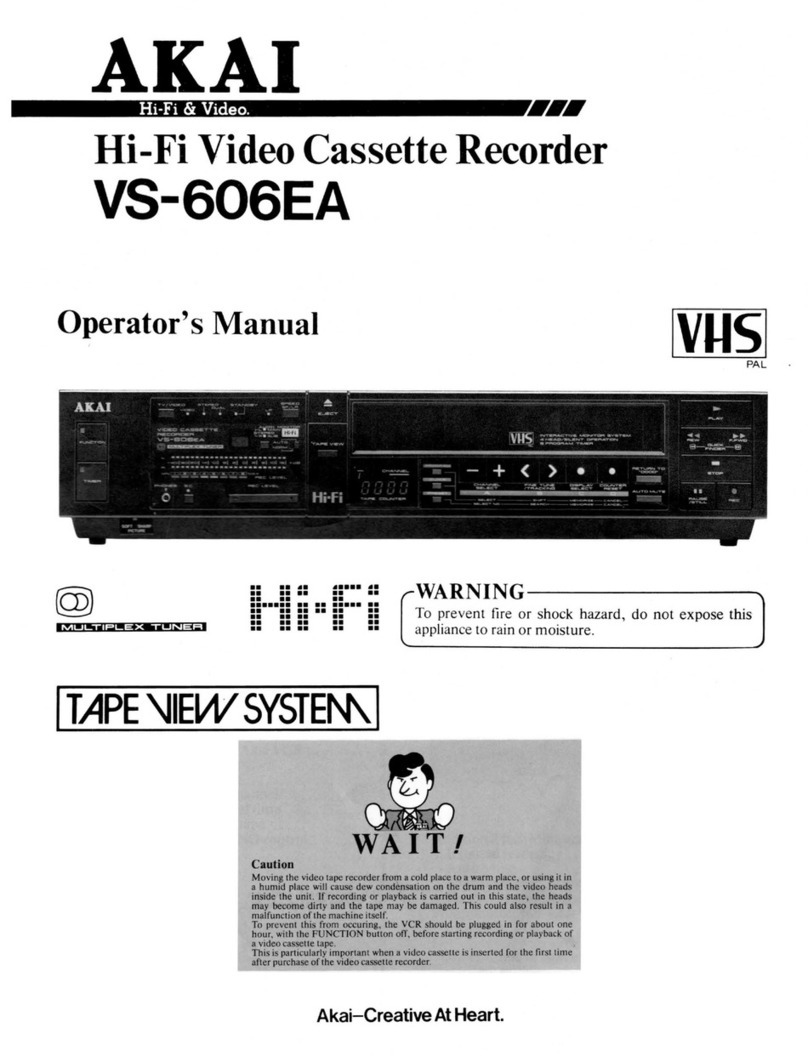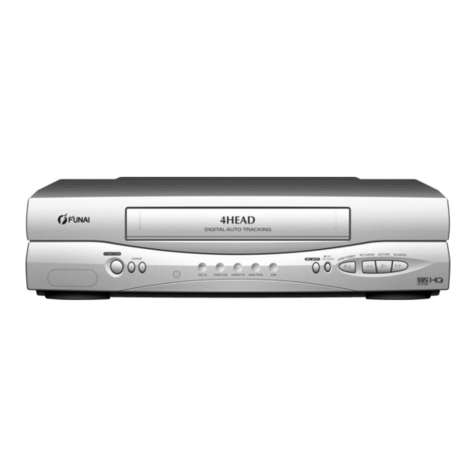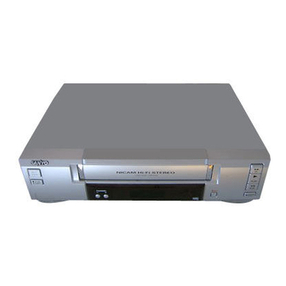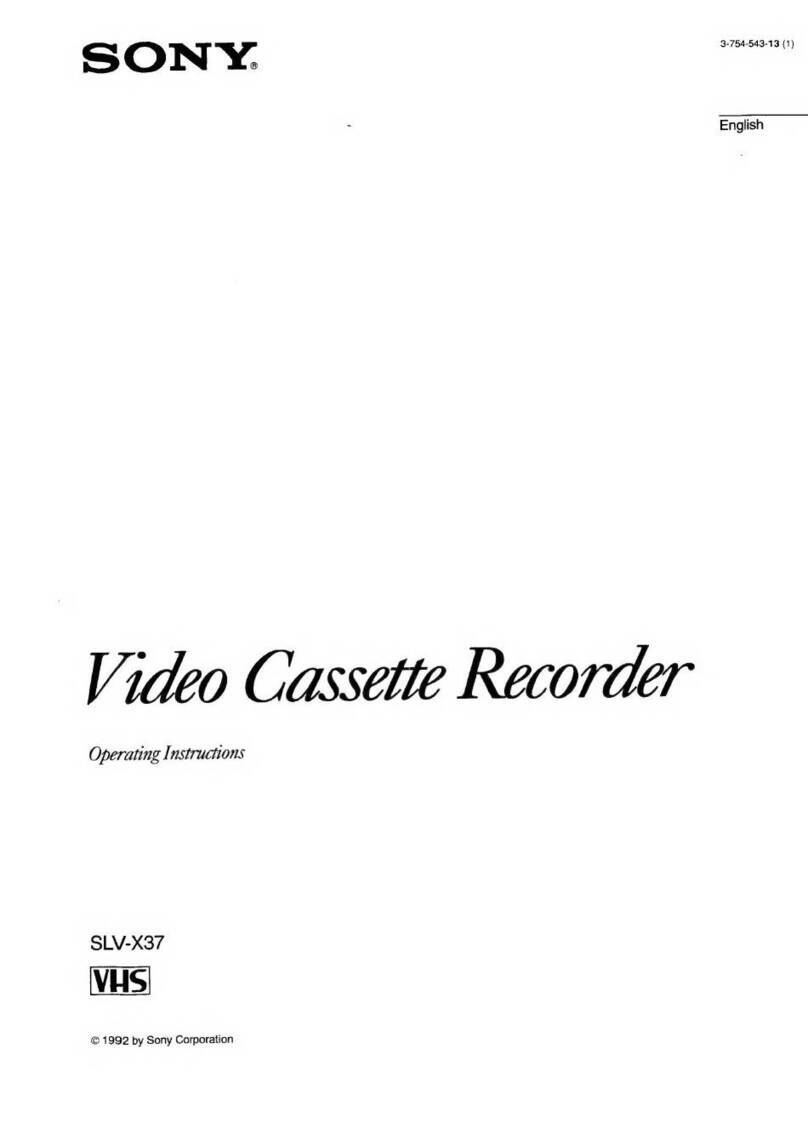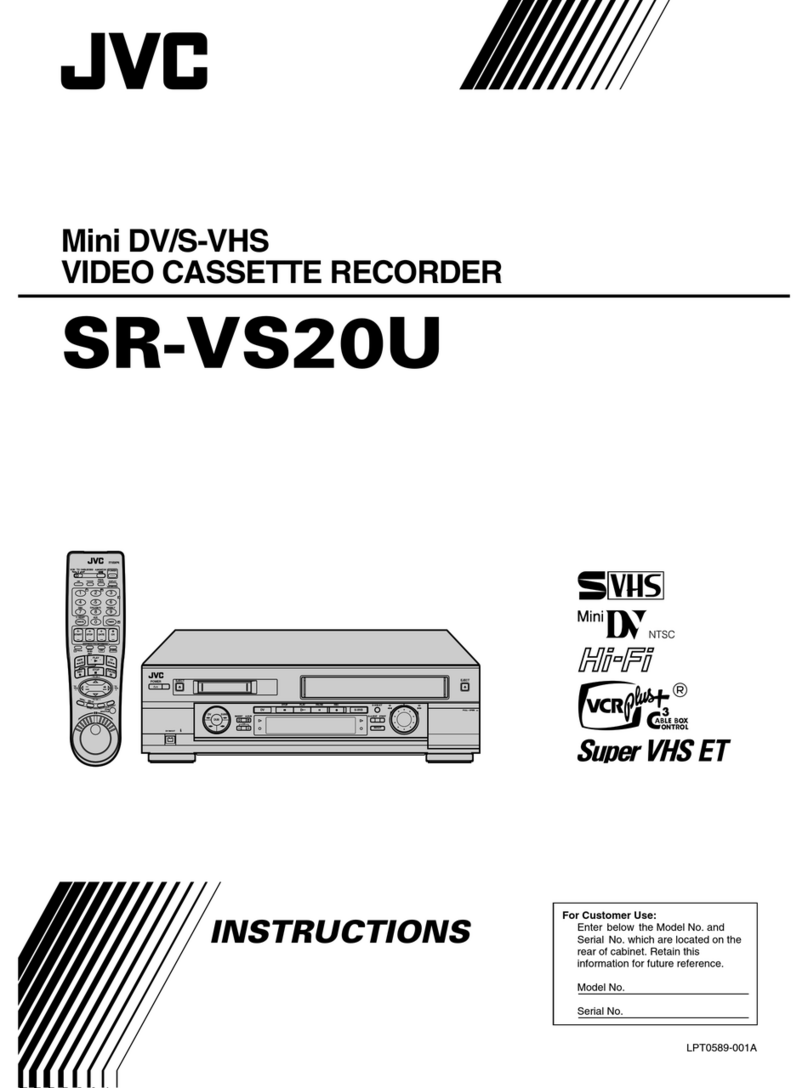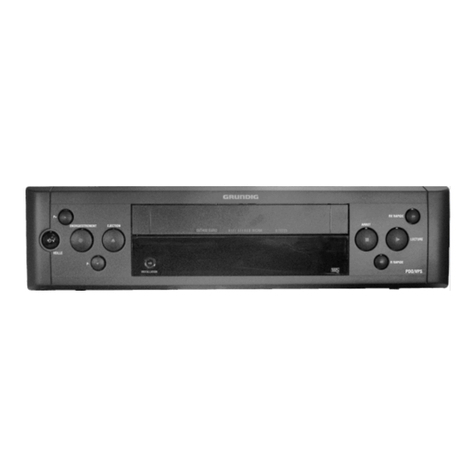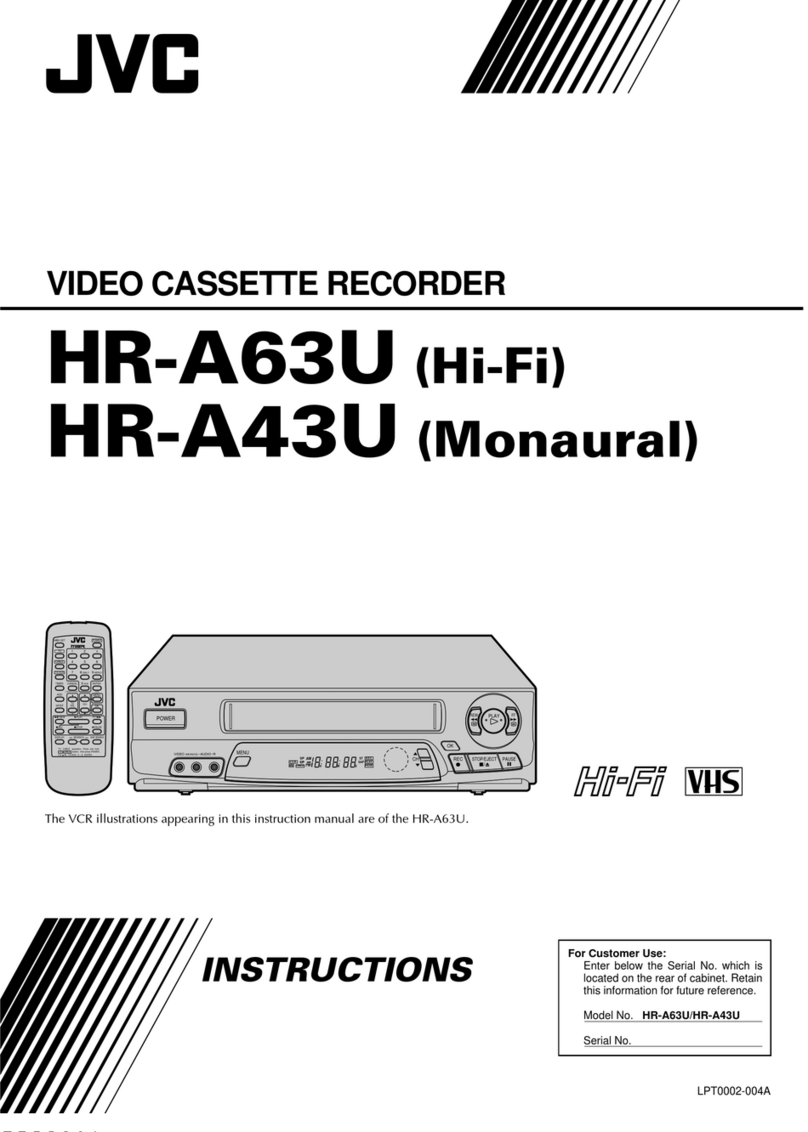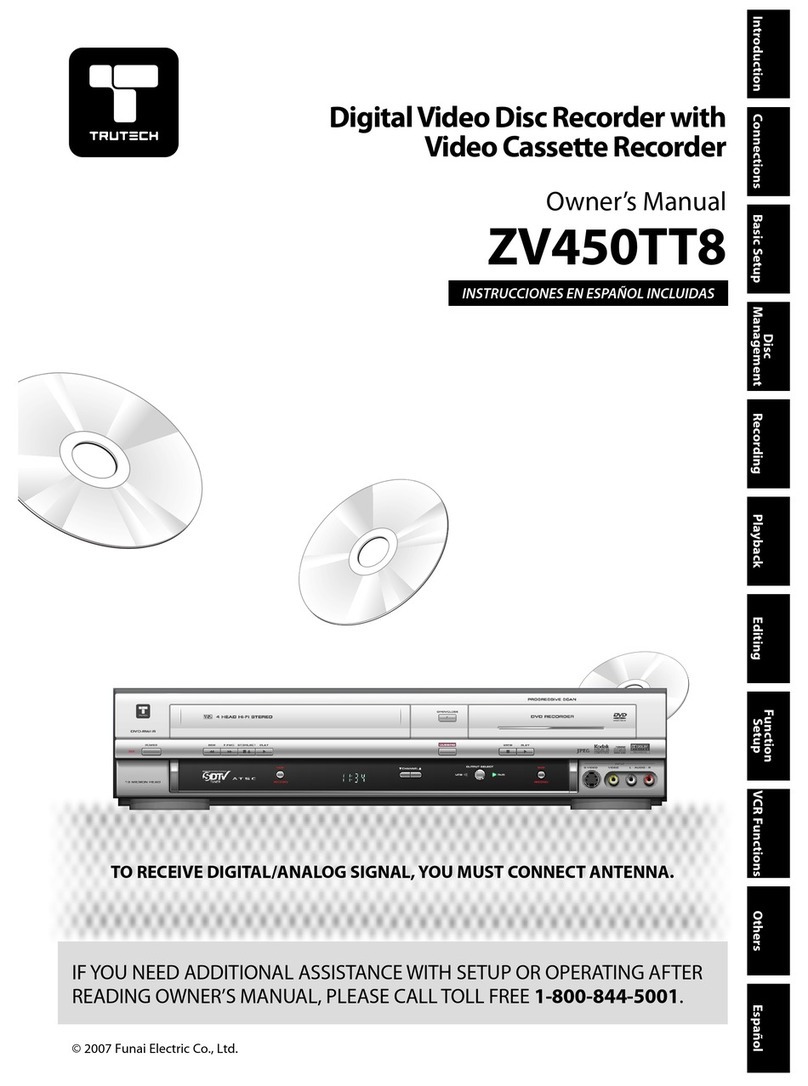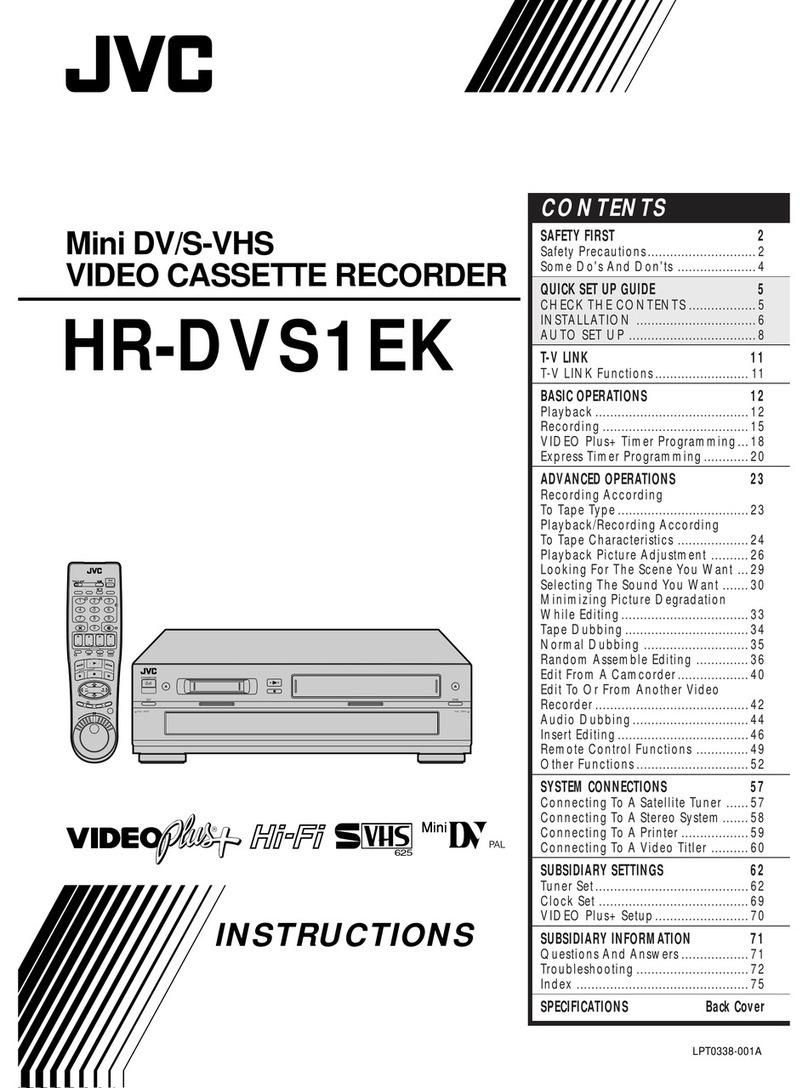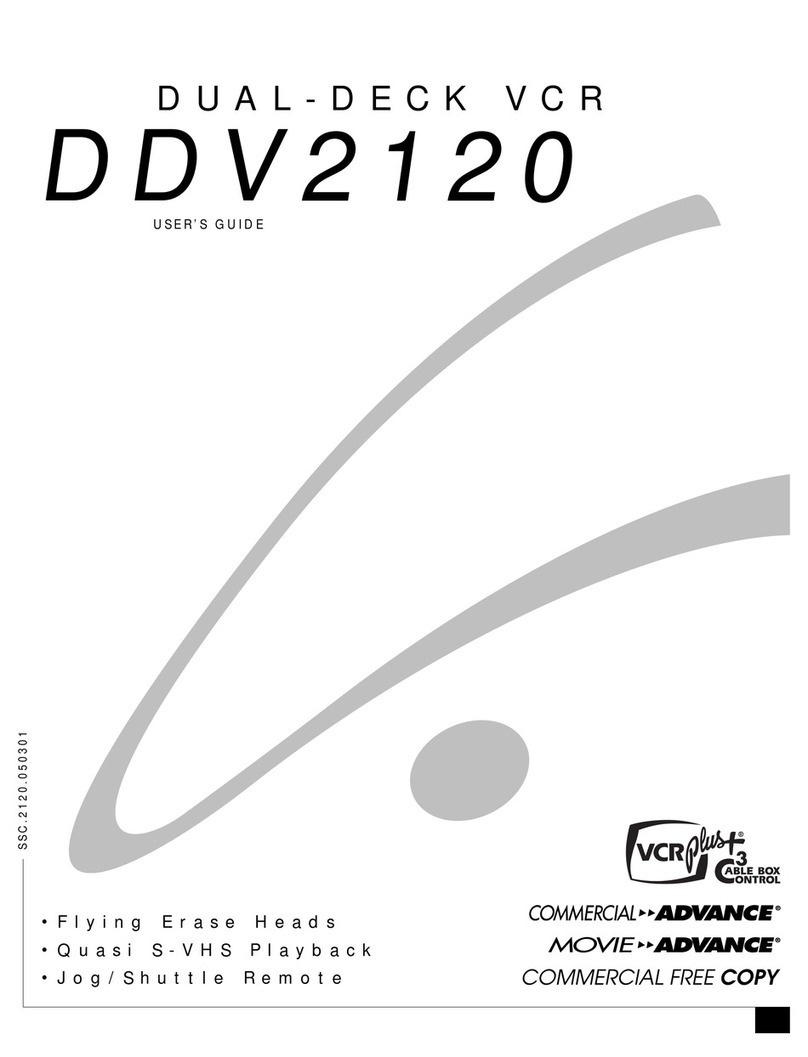
VC-V50S
VC-V80T
VC-V91T
2
PRECAUTIONS IN PART REPLACEMENT
When servicing the unit with power on, be careful to the section marked white all over.
This is the primary power circuit which is live.
Whencheckingthesolderingsideinthetapetravelmode,makesurefirstthatthetape hasbeenloadedandthenturnover
the PWB with due care to the primary power circuit.
Make readjustment, if needed after replacement of part, with the mechanism and its PWB in position in the main frame.
(1) Start and end sensors: D804 and D803
Insert the sensor's projection deep into the upper hole of the holder (LHLDZ1962AJ00). Referring to the PWB, fix the
sensors tight enough.
(2) Photocoupler RH-FX0007GEZZ: IC901
Refer to the symbol on the PWB and the anode marking of the part.
(3) Cam switches A and B (RH-PX0253GEZZ): D806 and D807
Adjust the notch of the part to the white marker of the symbol on the PWB. Do not allow any looseness.
(4) Take-up and supply sensors (RH-PX0252GEZZ): D801 and D802
Be careful not to confuse the setting direction of the parts in reference to the symbols on the PWB. Do not allow any
looseness.
(5) Diode bridge (RH-DX0083GEZZ): D901
Adjust the + marking of the part to the symbol's cathode marking on the PWB.
1. SPECIFICATIONS Format: VHS PAL/MESECAM/NTSC standard
Recording/Playback system: Rotary, slant azimuth two head LP helical scan system
Video signal system: PAL/MESECAM 4.43Hz colour or monochrome signals : 625 lines
PAL/MESECAM/SECAM colour or monochrome signals : 625 lines
NTSC 3.58Hz colour or monochrome signals : 525 lines
Maximum Recording/playback time: 240 min with E-240 tape at SP mode
480 min with E-240 tape at EP mode
480 min with T-160 tape at LP mode
Tape width: 12.7 mm
Tape speed: 23.39 mm/sec. (PAL/MESECAM)
33.35 mm/sec. (NTSC)
Antenna: 75 ohm unbalanced
RF output signal: UHF channel E30 – E39 (VC-V91T only)
Power requirement: AC110V–240V, 50/60Hz
Power consumption: 13 W (approx.)
Operating temperature: 5°C to 40°C
Storage temperature: –20°C to 60°C
Video output: 1.0 Vp-p, 75 ohm
Audio output: Line: –8 dB, less than 1 kohm
Weight: 2.7 kg (approx. )
Dimensions: 360 (W) x 284.5 (D) x 94 (H) mm
Accessories included: 75 ohm coaxial cable
Operation manual
Infrared remote control
Battery (R6 (UM/SUM–3 or AA)) x 2
Mic (VC-V91T only)
Note: The antenna must correspond to the new standard DIN 45325
(IEC 169 - 2) for combined UHF/VHF antenna with 75 ohm connector.
* Design and specifications are subject to change without notice.

